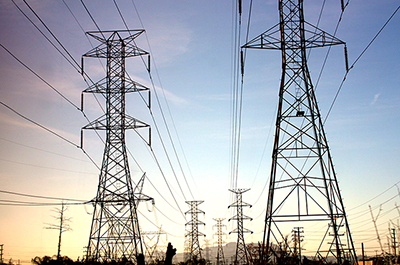[ad_1]
The Midwest electric grid operator on Monday approved an enormous plan to build more than 2,000 miles of new long-range transmission lines; the largest portfolio of regional transmission line projects ever proposed in the U.S.
The move will help provide 12 million homes with power and create hundreds of thousands of jobs across the region, according to an estimate from the Clean Grid Alliance. Proponents and climate advocates say the investment will make the grid more reliable by limiting congestion while making room for more than 50 gigawatts in renewable energy to be added to the grid, paving the way to decarbonize the energy sector.
Shoring up the grid
After nearly two years of studies and public engagement, the Midcontinent Independent System Operator’s (MISO) board of directors voted to approve $10.3 billion for 18 high-voltage transmission lines in the upper Midwest that are expected to come online in 2028 and 2030. The portfolio of projects is the first phase of MISO’s Long-Range Transmission Planning process.
For Minnesota, that means three new transmission lines, which would help to power 3.2 million homes and create more than 56,000 jobs, according to an estimate from the Clean Grid Alliance. One of those lines is a 150-mile line from the Iron Range in the northern part of the state to Benton County in central Minnesota that is to be constructed by Minnesota Power and Great River Energy – two of the 10 utilities that make up Grid North Partners.
“The Upper Midwest region leads the country in renewable energy, and as our system transitions away from fossil fuel plants, we need new transmission infrastructure to help ensure reliability and resilience, deliver carbon-free energy, and keep bills affordable for our customers,” Grid North Partners, which includes Xcel Energy, said in a joint statement. “We stand ready to develop these new projects.”
“Right now in Minnesota, we have areas where electricity generation from wind is consistently performing, but we can’t get all of that energy where it is most in demand because our transmission lines do not have the capacity we need,” said Mike Schowalter, a senior policy associate for Fresh Energy, said in a statement.
Transmission lines allow electricity to flow from where it is generated to where it is needed. Demand can outpace supply during periods like heat waves when many more people utilize appliances like air conditioners, said Meghan Hassett, Midwest clean energy advocate for the Union of Concerned Scientists.
The way the grid operates now, she said, electricity generated by low-cost renewable energy, like wind and solar, can’t get to more rural parts of the state due to the lack of infrastructure, which can then increase energy costs for consumers and put a strain on the grid.
“The primary purpose for this round of transmission projects that MISO put together … was really focused on ensuring reliability and resilience and making sure that not only do the lights stay on when a storm hits or when there’s other stressors to the grid, but that we see resilience and fewer impacts in terms of having to have controlled outages or blackouts for people.”
Climate impact
With the new lines comes the integration of 53 gigawatts of power from renewable sources, which would plug a hole left by electricity generated by fossil fuel-burning plants as more and more utilities move away from burning coal – the largest stationary source of greenhouse gas emissions nationwide.
The move by MISO is the latest of several efforts by power operators, utilities and government agencies to shift toward renewable energy and prevent climate change caused by greenhouse gas emissions.
Xcel Energy has pledged to provide customers with 100% carbon-free energy by 2050 and plans to retire its coal-fired power plant by 2030. And Minnesota Power, which already provides 50% of its power from renewable energy sources, also pledged to be carbon-free by 2050 and remove coal from its system by 2035.
Gov. Tim Walz, who signed a letter with the governors of Illinois, Michigan and Wisconsin last year in support of the MISO project, also proposed a clean energy standard with an even more accelerated timeline, calling for all electric utilities to be 100% carbon-free by 2040.
But significant climate and energy investments failed to materialize in the divided Minnesota Legislature this past legislative session. Lawmakers reached a deal on an energy budget of more than $80 million that included funds for renewable energy infrastructure. But disagreements over larger budget items meant the energy budget didn’t make it across the finish line either.
Minnesota is not on pace to meet its carbon emissions reductions goals of 30% by 2025 and 80% by 2050, which Hassett said are already outdated goals by current climate science standards. There’s support for 100% carbon-free energy in the DFL-controlled House, but the impasse between the two chambers on climate legislation has been the biggest barrier to Minnesota’s transition to renewable energy, said Hassett.
“We need policies from legislators to support the growth of renewable energy,” she said. “And we need Minnesota legislators and policymakers to continue to pressure MISO – and to continue to support MISO – in doing much more long range transmission planning much faster to align the grid with the decarbonized power system that Minnesotans need to live healthy lives and lower their energy bills.”
[ad_2]
Source link








